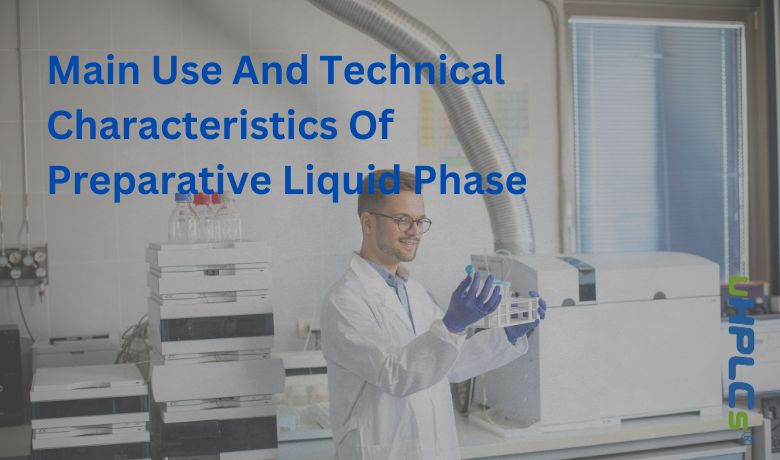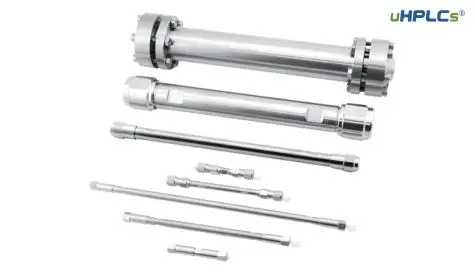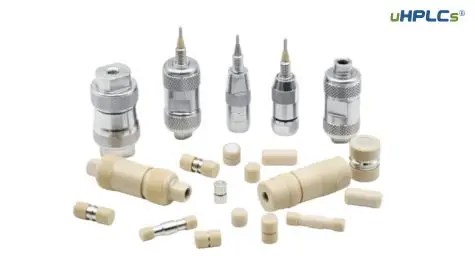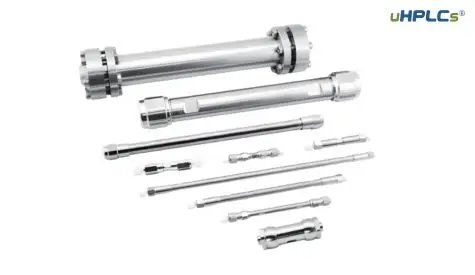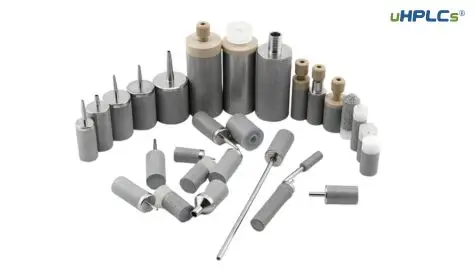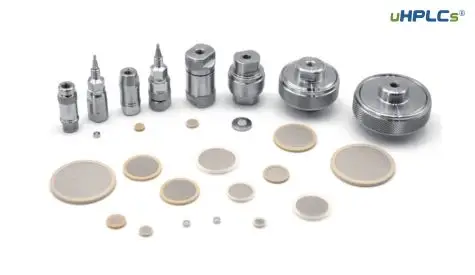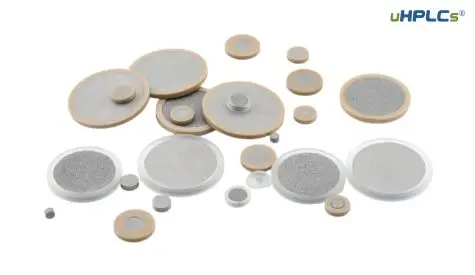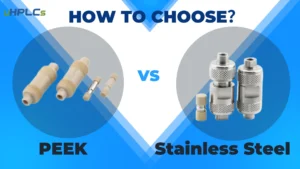Preparative HPLC is often associated with large capacity columns and high flow rates. However, it is not the size of the equipment and the amount of mobile phase consumed by the system that determines preparative HPLC but rather the purpose of the separation. Unlike the analytical liquid phase, the purpose of the preparative liquid phase is to extract and purify the monomer of the product. About the preparative liquid phase, HPLC will talk to you today. Get your little book ready.
Compared to traditional purification methods (e.g., distillation, extraction), the preparative liquid phase is a more efficient separation method. It is, therefore, widely used for extracting and purifying samples and products. With the increasing demand for high-purity components in synthetic, phytochemical, biochemical, and pharmaceutical fields, the field of application of preparative liquid chromatography is rapidly expanding and developing.
Difference between preparative and analytical liquid phases:
The counterpart of the preparative liquid phase is the analytical liquid phase. The biggest difference between them is not in appearance but in purpose. The purpose of the analytical liquid phase is to analyze the sample, what components are there, and how much, also called qualitative and quantitative. To do a good job in an analytical liquid phase, the most important concern is the separation and sensitivity to be separated, measured, and measured accurately. And the preparative liquid phase is to use the separation ability of the column to remove impurities and get high-purity samples. Why the emphasis on purity?
In the laboratory, infrared, ultraviolet, and nuclear magnetic instruments require samples of sufficient purity to obtain accurate results. In addition to laboratories, the production of pharmaceuticals also requires purification, especially biologics and pharmaceuticals. Many biological products are no different from eating an egg if they are eaten directly, and direct injection is required to retain the active ingredients. In the case of injectable therapy, the drug goes directly into the bloodstream, so purity is very important. In the laboratory, the liquid phase used for preparation is configured similarly to an ordinary analytical solution. There is a pump, a feeder, a column, and a detector. The preparative liquid phase is usually equipped with a fraction collector to collect the separated compounds. The fraction collector is like a storage box for liquid chromatography, storing the same substances together for each analysis. The fraction collector can be connected in series directly behind the detector. It can also be connected to a tee parallel to the detector, behind the column. Several can be connected in parallel in some laboratories where the amount to be collected is too large for one fraction collector. The instrument automatically collects when a compound peaks, according to the signal from the detector. This is usually programmed according to time but can also be triggered automatically according to the signal strength of the detector. One by one, compounds are collected in vials or tubes through a fraction collector or can be piped into larger bottles.
There are many ways to classify preparative liquid phases, such as by pressure or yield, which intersect with each other and have no clear criteria. Different types of preparative liquid phases have different characteristics. For example, this preparative liquid phase column used in production looks slightly different than in the laboratory. The inner diameter is 1.6m, the column weighs 36 tons, and the mobile phase consumed daily can fill half a small swimming pool. In addition to the exceptionally large ones, there are also exceptionally small ones. For example, the microgram preparation, also often referred to as micro-prep, is interesting because the micro-fraction collector allows direct use of MALDI spot plates.
Materials used to prepare chromatographic columns and their characteristics:
Glass columns of various sizes are readily available and inexpensive in the laboratory. Still, the Achilles heel of glass columns is that they can withstand very little pressure and are prone to breakage. When the flow rate of the mobile phase is slow due to low pressure, using a high liquid level or adding high-pressure air (or nitrogen) is a simple solution. Adding a vacuum underneath can also solve this problem to some extent.
Stainless steel columns have good corrosion and pressure resistance but are relatively expensive. If, for example, only a small separation task is required and funds are available, small preparation columns of 1 cm diameter are the preferred choice. Plexiglas columns are also resistant to pressure and corrosion. Compared to stainless steel columns, they are translucent and can see the running state of the liquid, and their characteristics are more prominent for colored substances.
Selection of column loading method:
Depending on the stationary phase granularity and the column size, different loading methods are used, and often the better the loading, the better the separation. The column loading effect is highly related to the particle size of the packing, and the reduction of particle size will lead to the difficulty of loading the column. Generally, the wet method loads the stationary phase with a particle diameter of less than 20-30um. The so-called “knock-and-load” technique uses stationary phases with particle diameters greater than 25 um. The purpose of the wet method is to force the relatively loose stationary phase suspension into the column at high speed, thereby reducing the formation of voids. However, the high-pressure suspension loading technique becomes very complicated when the column diameter is larger than 20 mm, and the applied pressure is 30-40 bar. A column-length compression technique can load the smaller stationary phase into a larger preparative column. In this method, the stationary phase suspension (or occasionally the dry filler) is first loaded into the column under pressure and physically compressed. There are two methods of compression: radial compression and axial compression. The wet method of column loading requires certain equipment, and after the column is filled, a measurement of column efficiency should be available. Columns with low column efficiency should be refilled.
Selection of mobile phase:
In addition to the same considerations as for analytical chromatography, chromatographic separation should be considered when selecting the mobile phase, followed by a secondary separation operation such as rotary evaporation. Generally speaking, using highly toxic solvents or as little as possible for multiple solvents is not advisable. If the product contains a large amount of solvent, the purity of the solvent should also be considered in it.
Estimation of component retention time
After measuring the retention time with the analytical column under the same chromatographic conditions (same stationary phase and mobile phase), the approximate retention time region of the component can be known by calculation according to a certain linear flow rate (not volumetric flow rate) of a single component. Analysis of the peak shape of the spectrum is also of great reference value for determining the retention time.
Collection of products
Manual fraction collection is time-consuming and laborious, and automatic fraction collectors offer great convenience. Many laboratories and plants have adopted fraction collectors.
Overloading, edge cutting, center cutting, amplification techniques, and nonlinear utility
In preparative chromatography, because it is not necessary to achieve the same degree of separation as in analytical chromatography, the concentration and volume of the feed sample can be greatly increased within a certain range. When separation, some techniques cannot be used when doing analytical chromatography. Because of the space, they are not described here.
Column conversion technique
A simple extension of the column, or a relatively easy refinement of one (or several) of the components, is achieved by employing a connector or valve.
New Preparation Techniques
Simulated moving beds that allow continuous feeding and edge-cutting utility and column-switching techniques that allow better use of solvents and fillers have been applied in industrial production. Their theory and techniques are also increasingly refined. Head-on chromatography, supercritical fluid chromatography, counter-current chromatography ring chromatography, and gas phase preparative chromatography have also been applied in research and industrial production.

